Do you ever feel like you’re waging a war against dirt and grime in your laundry room? It seems like no matter how you treat stains, they always manage to come back victorious. But never fear – we’re here to help!
In this blog post, we’ll focus on a smaller skirmish in the larger mud room war: The Battle Of Borax vs OxiClean in your Laundry Room. This has been the subject of more discussions than I like to admit.
Borax is a naturally occurring mineral salt that has been used for centuries as a cleaning agent. OxiClean is a compound made from soda ash and dry hydrogen peroxide and has tremendous stain-fighting ability. Understanding how these substances work will inform you as to which to use in a given situation.
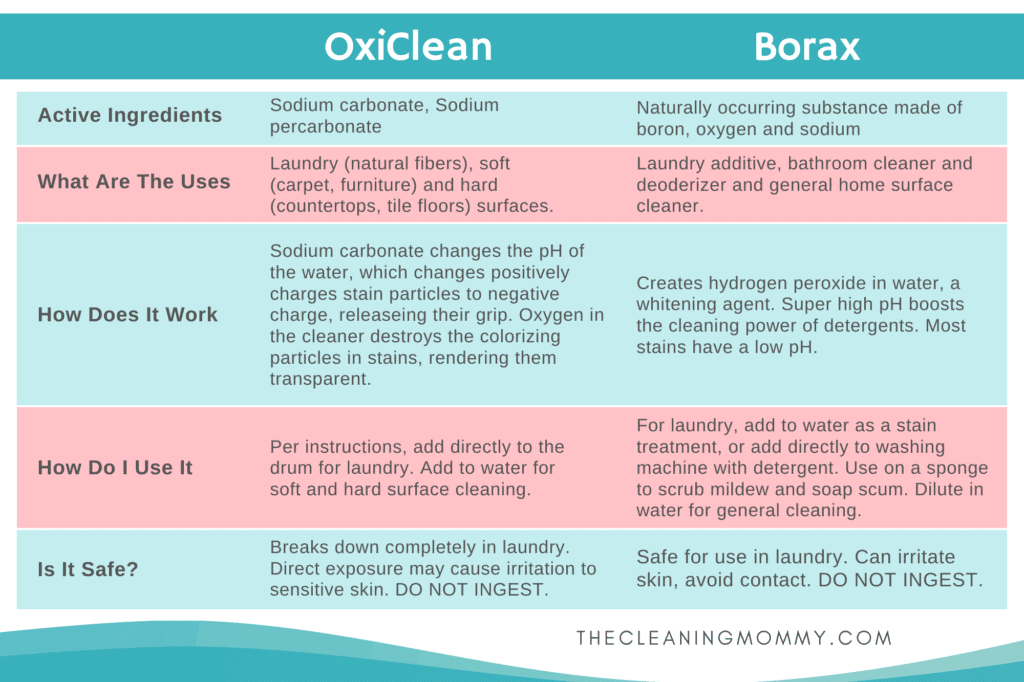
Let’s evaluate each one and decide which is best for you based on the pros and cons of each.
What is Borax?
Borax is a naturally occurring mineral salt. Since ancient times, borax has been used for cleaning purposes. It’s very versatile—you can use it to clean your laundry, dishes, floors, and windows! Mold and mildew are also effectively eliminated by borax.
What are Borax Ingredients?
Sodium borate (commonly known as borax) is a white powdery substance. It is also (less commonly) known as sodium tetraborate, sodium borate, or disodium tetraborate. It has a wide assortment of uses as a household cleaner and laundry soap booster. Sodium, boron, and oxygen are all present in this compound. Its alkaline nature makes it very effective in breaking down acidic stains.
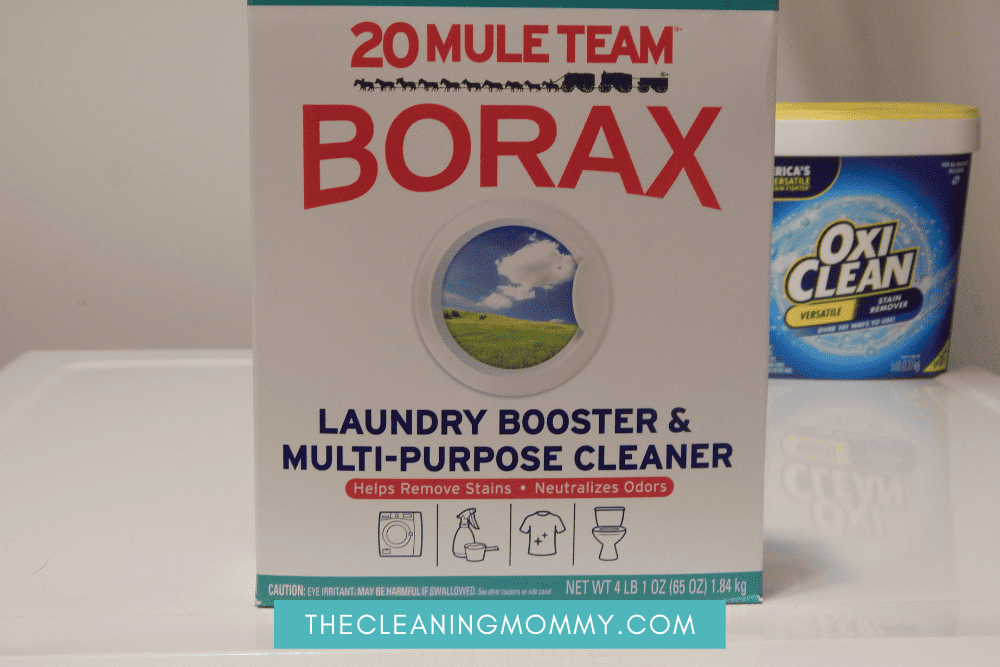
How Does Borax Work?
Borax has a pH of 9.1, which makes it extremely alkaline. You can combat acidic stains by dissolving this solution in water and using it as a pretreatment solution for removing dirt and grime. When added to the laundry, borax can brighten white clothes. Borax helps absorb dirt out of your garments. Additionally, it enhances the cleaning capabilities of bleach when combined with it.
What Can Borax Be Used On?
Borax is a versatile cleaning product that can be used in various ways. In the laundry room, you can mix borax with detergent to help boost its stain-lifting power. Borax effectively removes dirt, grime, and other surface debris (think incredibly sticky messes). It is often used as a bathroom cleaner or to remove mold and mildew.
You can use borax to clean cookware and remove surface rust in the kitchen. And elsewhere n the home, you can sprinkle borax in areas or appliances (like refrigerators and humidifiers) to absorb odors. So whether you’re scrubbing a big mess or just trying to keep your home fresh and tidy, borax is a helpful tool to have on hand.
Can Borax Kill Bugs?
Borax is a natural product containing boric acid. This poison is fatal to many household pests, such as cockroaches, ants, and fleas. However, borax is safe for humans and pets when used correctly. When applied to pest infestations, borax kills the insects by dehydrating them. In addition, borax is inexpensive and readily available, making it a popular choice for dealing with household pests.
However, it is important to use borax safely and follow instructions carefully to avoid harming yourself or your home. When used correctly, borax is an effective way to get rid of household pests.
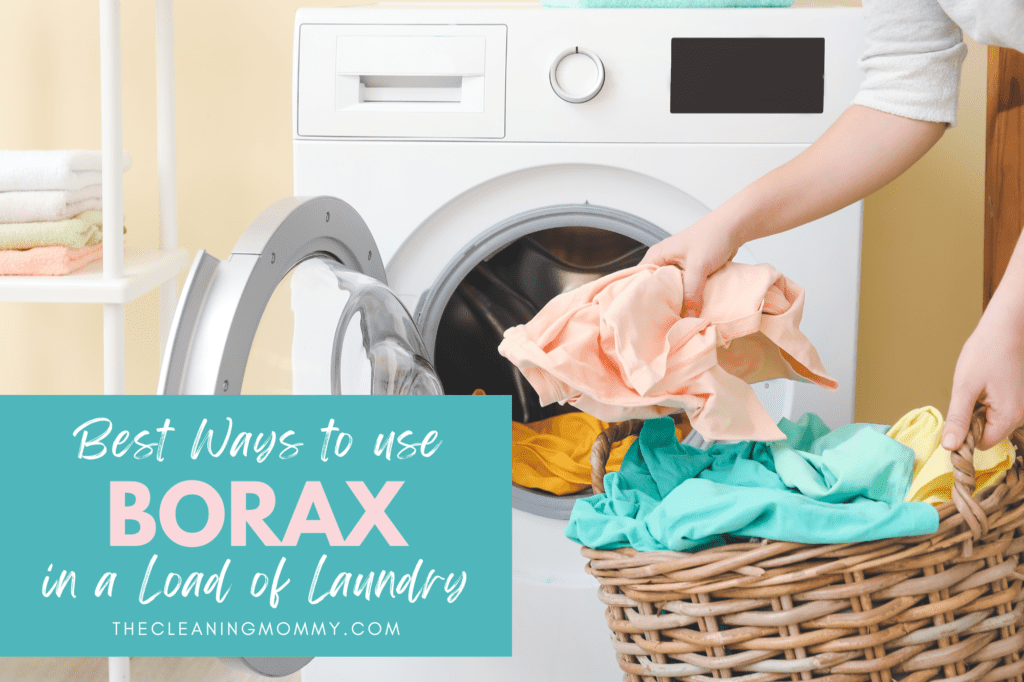
Is Borax Safe?
When used as directed, borax is safe for most surfaces and materials. However, it can also be dangerous if not used properly. Ingesting borax can lead to nausea, vomiting, and diarrhea; large amounts can cause shock and kidney failure. It’s also been linked to reproductive problems in men and developmental issues in children.
Borax can also cause skin and eye irritation; if exposed to it regularly, it can cause rashes. If you’re working with borax, taking precautions is important to avoid exposure. Wear protective clothing and eyewear, and wash your hands thoroughly afterward. Call poison control immediately if you think you or someone else has been exposed to borax.
Some people ask: Does Borax damage washing machine parts? The answer is a resounding NO! Borax is completely safe for your machines when used as directed. It is also considered safe for septic systems and wastewater treatment.
Best Ways to Use Borax in a Load of Laundry
Borax is a great addition to detergent and can be used in a variety of ways to keep your clothes clean and fresh. You can add it to your cycle along with your regular detergent to boost its cleaning power, or you can use it as a pre-treating whitening agent for a stain remover. You can also make a DIY booster for clothes by mixing equal parts of borax and baking soda. Just be sure to dissolve the mixture in hot water before adding it to your washing machine.
How much borax should you use? As always, be sure to follow the care instructions on your clothing labels when using any laundry products, including borax. Adding borax to a pre-soak load of warm water is also effective in getting fabrics brighter and cleaner.
There is also a method for “super-cleaning” your laundry called “laundry stripping.” You just put borax in a bathtub full of hot or warm water along with baking soda (sodium bicarbonate) and laundry detergent. Then you soak your wash for a couple of hours before laundering. The combo loosens and lifts built up softeners, hard water minerals and soap residue, leaving your clothing super clean.
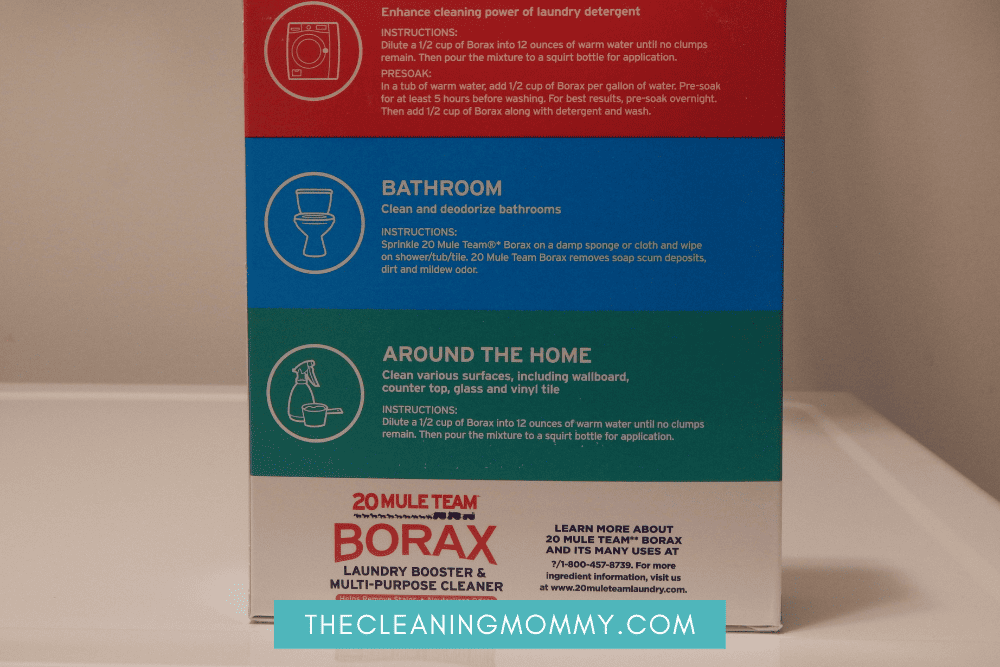
Borax as a Softener
Did you know that borax can be used as a fabric softener? This versatile substance can be added to your laundry to help soften clothing and reduce static cling. Borax breaks down the bonds between molecules, allowing fabric fibers to slide more easily against each other.
To use borax as a fabric softener, add one cup of the substance to your regular detergent. For best results, use hot or warm water.
What is the Downside of Using Borax?
When used correctly, it is an effective and safe product. However, misuse can lead to skin irritation and other health problems. For example, borax can be irritating to the respiratory system if inhaled, and it can cause stomach upset if ingested. In addition, prolonged exposure can damage the reproductive and nervous systems.
Therefore, it is crucial to use borax only as directed and to keep it out of reach of children and pets. With proper precautions, borax can be a valuable addition to your home arsenal of cleaning products.
Borax or Bleach?
When it comes to laundry, there are a lot of different products on the market. Bleach is one of the most popular options, but it’s not the only choice. Borax is another common wash aid, and it has a few advantages.
First, borax is less likely to damage fabric. It’s also effective at removing stains, even tough ones like grass or wine. In addition, borax can help to brighten whites and colorfast fabrics. However, borax does have one downside: it’s not as effective at killing bacteria. So if you’re looking for a thorough clean where bacteria may be a concern, replacing borax with bleach for a load is a good idea. But if you’re worried about damage or fading, borax is a good choice.
But in answering which is better, borax or oxiclean, we need to first discuss what the well known contender is…
What is OxiClean?
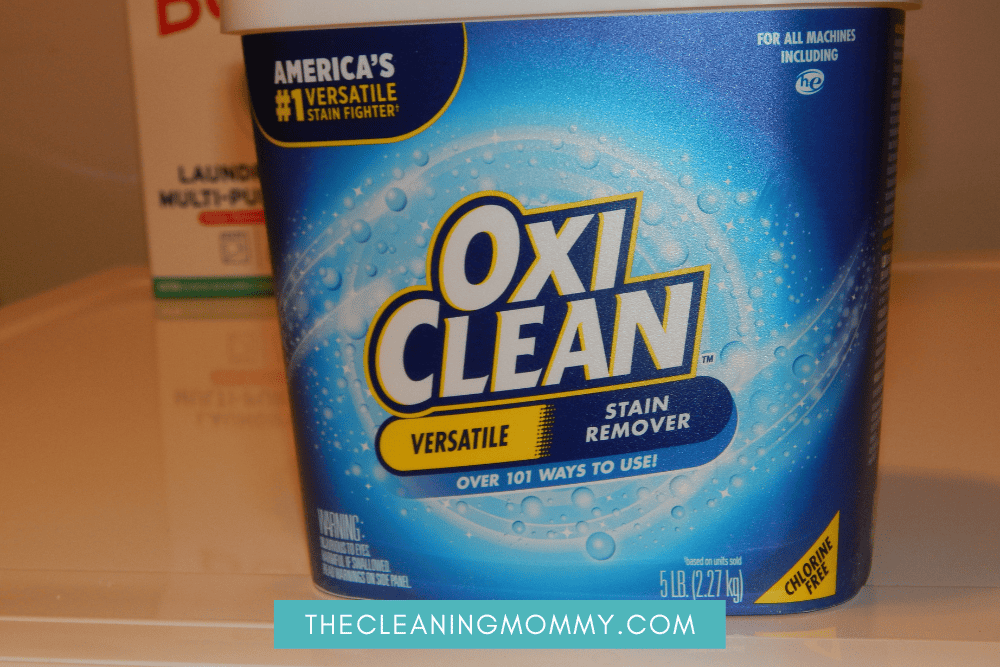
Oxi clean, oxy clean, or OxiClean; no matter how you spell it, this chemical compound is amazing! And, more widely known than many other bleach-free laundry detergents.
The product was so popular that it quickly progressed from being sold through an infomercial to being sold online and in stores everywhere. Today, OxiClean or OxiClean powder is one of the most popular brands of household cleaners, and its products are some of the most popular stain removal products on the market.
What are the OxiClean Ingredients?
OxiClean is a powerful stain fighter that you can use on a variety of surfaces. The active ingredient, sodium percarbonate (powdered oxygen bleach) is a compound made from soda ash and dry hydrogen peroxide. This combination releases hydrogen peroxide when dissolved in water. Hydrogen peroxide is a potent oxidizing agent that clears away grime. Oxiclean is not pure oxygen bleach. It is about 1/2 that compound mixed with soda ash (another powerful cleaner) and some fillers.
How Does OxiClean Work?
The powder form of this product comes in a plastic container that activates once it is mixed with water. You can also get it in convenient laundry pods. Oxygen is then released and attacks the stains on clothes without damaging or weakening the fabric. Several changes have been made to its original formula over time to improve its ability to remove tough problems on clothes like grease and grass. OxiClean powder works best in hot or warm water, so similar machine settings as borax uses.
Blue crystals and other ingredients in the white powder disperse dirt in water so that staining can be removed. It also removed and foul scent from your clothes. No toxic fumes are released into the environment by this product. Unlike other stain removers, it does not contain chlorine bleach, so it does not harm colored fabrics when appropriately diluted. But we warned-OxiClean powder contains a lot of hydrogen peroxide, and can bleach materials if there is too much product and not enough water!
What Can OxiClean Be Used On?
OxiClean can be used on clothing as a laundry booster, spot stain remover for carpets and upholstery, and even on hard surfaces like tile and grout. It is safe for both white and colored clothes. So it can be used in more rooms than just the wash.
Other uncommon uses for OxiClean include cleaning labels off glass jars and deodorizing gym and sports equipment, like yoga mats and helmets. Mix with water to use as an instant liquid stain remover or a pre-treatment.
You can also mix a solution of OxiClean or Oxiclean powder to combat mildew on patio furniture and backyard playground equipment, like swings and slides. It can also be used to clean your toilet bowl and remove odors.
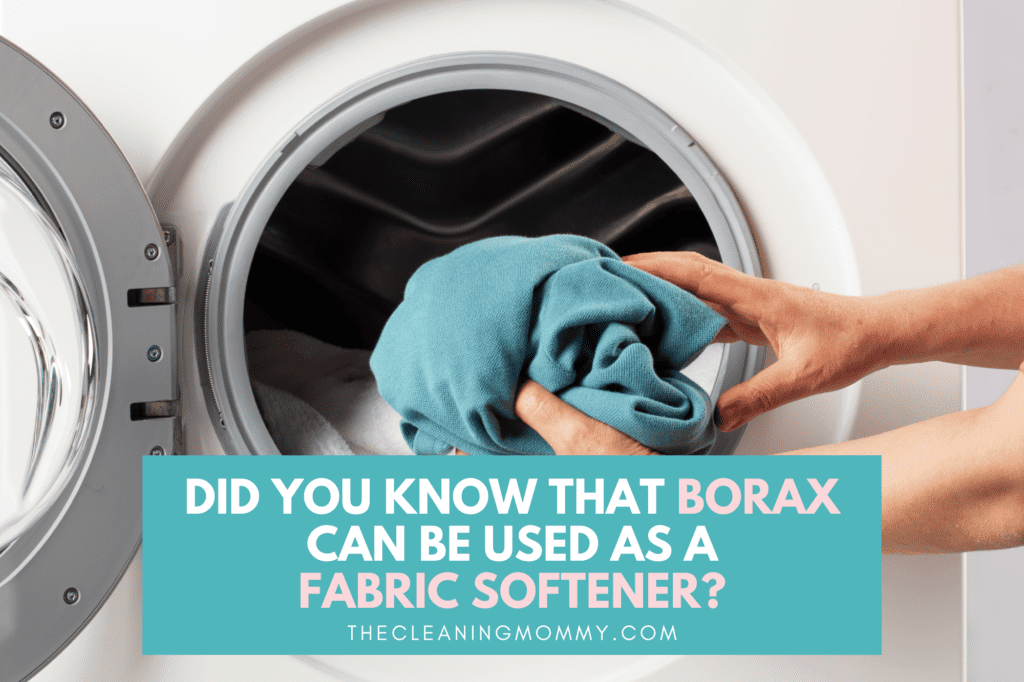
Can Oxiclean kill pests?
Oxiclean is a powerful cleaner used in various settings, including households, businesses, and industrial facilities. It contains oxygenated bleach, which is a highly effective cleaning agent. In addition to its cleaning properties, oxygenated bleach can also kill pests. The bleach works by breaking down the pest’s exoskeleton, which results in death.
While it is not typically marketed as a pest control product, it can be used to kill a variety of common household pests, including ants, cockroaches, and spiders.
Is OxiClean safe?
OxiClean is a powerful cleaning agent that contains soda ash, dry hydrogen peroxide, and ethoxylated alcohol. Sodium carbonate (soda ash) is a known irritant to the respiratory tract and can cause difficulty breathing if inhaled. Sodium percarbonate is a granular substance that combines soda ash and hydrogen peroxide. This compound has been shown to be acutely toxic to some animals, as well as causing irritation or damage to the eyes and skin when mishandled without proper protection, like gloves.
When used properly, OxiClean is safe for use around children and pets and can be used in both hot and cold water. For best results, always follow the instructions on the package. But truthfully, it is a versatile and practical stain-fighting product that every home should have.
OxiClean vs Bleach
Bleach and OxiClean both have their own advantages and disadvantages, so it’s important to choose the right one for your needs. Bleach is a powerful cleaner that can kill bacteria and remove stains. However, it is also corrosive and can damage surfaces if misused. Oxiclean, on the other hand, is a gentle cleanser that is safe for most surfaces. It is also effective at eliminating grime but not as much at killing bacteria.
However, it is not as powerful as pure bleach and may require multiple applications to achieve the desired results. When choosing between Oxiclean and bleach, it is important to consider the type of surface you are cleaning and the level of cleanliness you need. For general cleaning, Oxiclean is often the best choice. However, for tougher jobs, bleach may be necessary.
What is the Downside of Using Oxiclean?
While Oxiclean is a powerful cleaning solution, it doesn’t have as much versatility as one might think. There are some things that OxiClean should not be used on, including metals and rust. The chemical compounds in OxiClean can react with metal when washed, causing discoloration and damage. Additionally, OxiClean is not an effective rust remover.
Oxiclean must be used immediately after mixing into a solution – you cannot store it. This is because the chemical reaction when it is mixed with water is unstable and will break down over time. Therefore, it is important to be aware of these limitations when using OxiClean (and remember, as a dry powder, it doesn’t do much). And, it’s wise to keep an empty container nearby if you need additional storage options.
It’s always best to spot-test this product on an inconspicuous area of the fabric before using it on the entire stain, as it can cause damage to some materials if not mixed with enough water properly. Additionally, storing this product in a humid environment can cause it to stick together in the packaging, making it difficult to use.
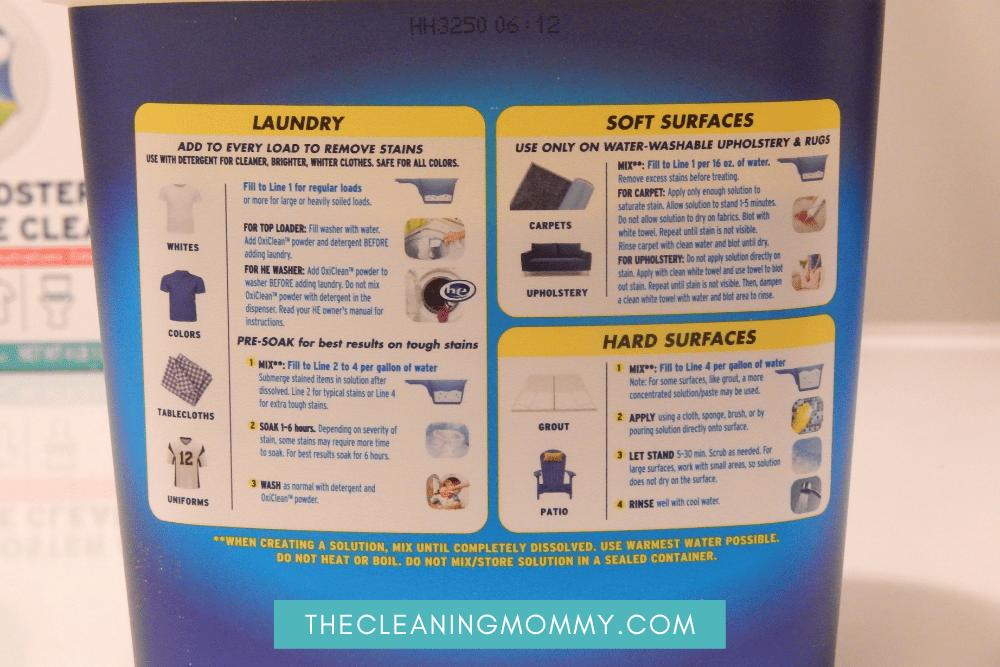
Can Borax & OxiClean Be Mixed?
Borax and OxiClean products are great laundry boosters for fighting stains. Remember that these are bleaching agents, so they will also lighten the color of your clothes, etc. If you are concerned about color fading, you can test the mixture on a small hidden area of the fabric first.
To use, simply add a half cup of borax and a half cup of OxiClean to your washing machine load along with your regular laundry detergent. For best results, pre-treat any particularly stubborn stains before cleaning. Both products are great for fighting tough problems, but they should not be used as a substitute for detergent. These products work best when used in conjunction with quality laundry detergents.
Borax and OxiClean are two common household cleaners that are often used for various cleaning tasks. However, it’s important to know that when mixing borax with OxyClean, these products should never be combined with ammonia or bleach cleaners. When these chemicals are combined, they can produce toxic gas. Inhaling this gas can cause severe respiratory problems, so taking precautions is necessary to avoid exposure. If you’re using borax or OxiClean for cleaning, be sure only to mix them with water. This will help to avoid any accidental exposure to toxic gases.
Can Borax and OxiClean Be Used With Hard Water?
The short answer is yes, you can use these products with hard water, in fact, borax is advertised as a water softener. But there are a few things to keep in mind. First, borax and OxiClean are both highly alkaline, so they can increase the pH of your water. If your water is already on the alkaline side, this could make it too high. Second, these products can also leave behind mineral deposits, contributing to hard water build-up. For these reasons, we recommend using them sparingly and always following up with a rinse.
Which is the Better Product? Borax vs OxiClean
Even though they are both used as stain removers, wash aids, and general cleaners, they have some other distinct differences besides what they can be used for.
Borax contains boron, sodium, and oxygen, and is a naturally occurring compound. The active ingredient in OxiClean is sodium percarbonate, which, when mixed with water, produces hydrogen peroxide. These key ingredient differences can mean a lot, depending on the type of cleaning project you have ahead of you.
The most common household use of borax is as an aid, but it can also be used as an all-purpose cleaner. However, borax isn’t recommended for spot treatment. Besides spot-removing stains, OxiClean also works as a wash aid and a general cleaner, giving it a little more versatility in some aspects.
Compared to OxiClean, borax is regarded as a more significant safety hazard. However, borax and OxiClean are both hazardous when inhaled, swallowed, or come into contact with your eyes.
Various products include glass cleaners and laundry detergents that use borax, which is available as pure powder. Among the products offered by OxiClean are powders, sprays, and detergents. No “pure” form of OxiClean exists.
Other Cleaners With Similar Comparisons
Napisan vs OxiClean
These are actually very similar products and work in similar ways. Napisan used to be a different formula but then changed its main ingredient to sodium percarbonate, the same as OxiClean.
Clorox 2 vs OxiClean
Chlorox 2 is a chlorine-based bleach whereas OxiClean is oxygen based. Both are great for removing stains, and both brighten colors in all washable clothes. Clorox 2 is known for being strong in cold water, whereas OxyClean excels in warm or hot water.
One advantage of OxyClean is that you can buy the active ingredients- dry oxygen bleach and soda ash as pure substances and mix your own. This can save a TON of money because as pure concentrated ingredients, you use WAY less per load and still get a powerful bleaching agent. Where you would use about half a cup of OxiClean, you would only need a couple of tablespoons of the other.
Calgon vs Borax
While Borax for purposes of this discussion is known as a detergent booster, it is also a water softener. As such, it is compared to Calgon, another water softener.
What is Calgon made of? It is sodium citrate, a compound that binds the natural mineral atoms in your water in soluble form. This keeps them from attaching as deposits on your clothes or as scale in your washing machine. At this job, Calgon is better than Borax.
However, this is ALL that Calgon does. Borax also boosts the stain-fighting properties of your laundry detergent which makes it a better all-around choice.
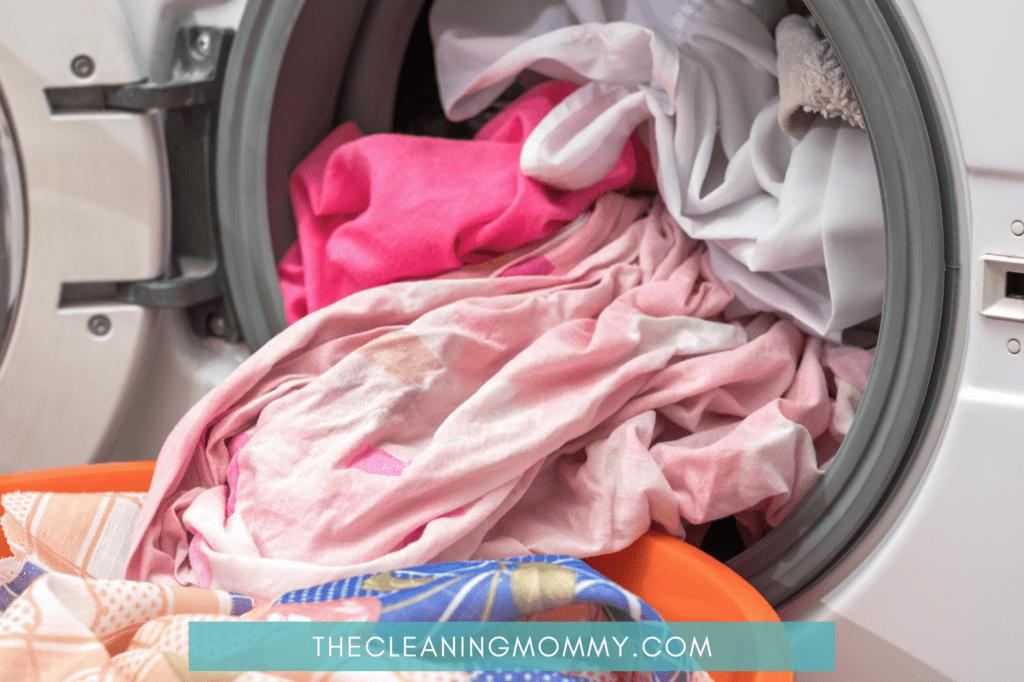
Conclusion of OxiClean vs Borax
Whether or not to use Borax vs OxyClean as a bleaching agent to remove stains, or as a general all-purpose cleaner, heavily relies on their intended uses. Both are affordable and effective if you are looking for a quality alternative to washing soda to help wash clothes.
Borax may be the better option if you want a product you can use with a wider variety of surfaces. But, if you are mainly looking for ready-made cleaning products and don’t want to have to create your cleaning solutions, OxiClean products may be more convenient. In the end, they are both great products that can help keep bright clothes brighter, kill bacteria, and help keep your home clean!
Other Cleaning Articles You May Like:
- How to get rid of mold on clothes
- 15+ Ways to get your laundry smelling good
- How to Get Baby Oil Out of Clothing (5 Simple Methods)
- 17 Epic Laundry Hacks For Working Moms
- Learn How to Wash Bath Mats (Quickly & Easily!)
- How To Wash North Face Backpack the Right Way!
- How to get bleach out of clothes fast.
- Declutter your life quotes
- How to remove detergent laundry stains
- How to get rid of that awful mildew smell from your towels
- Discover these 3 steps to get rid of a bad smell in your washing machine

Grainne Foley
Grainne Foley is a wife and mother of 2 great kids. During her 5 years of full time RV travel, Grainne learned to become very efficient at household chores, in order to make time for family adventures. Now, back in a house, she has continued to create tools and techniques to help others lighten the load of household organization and cleaning.
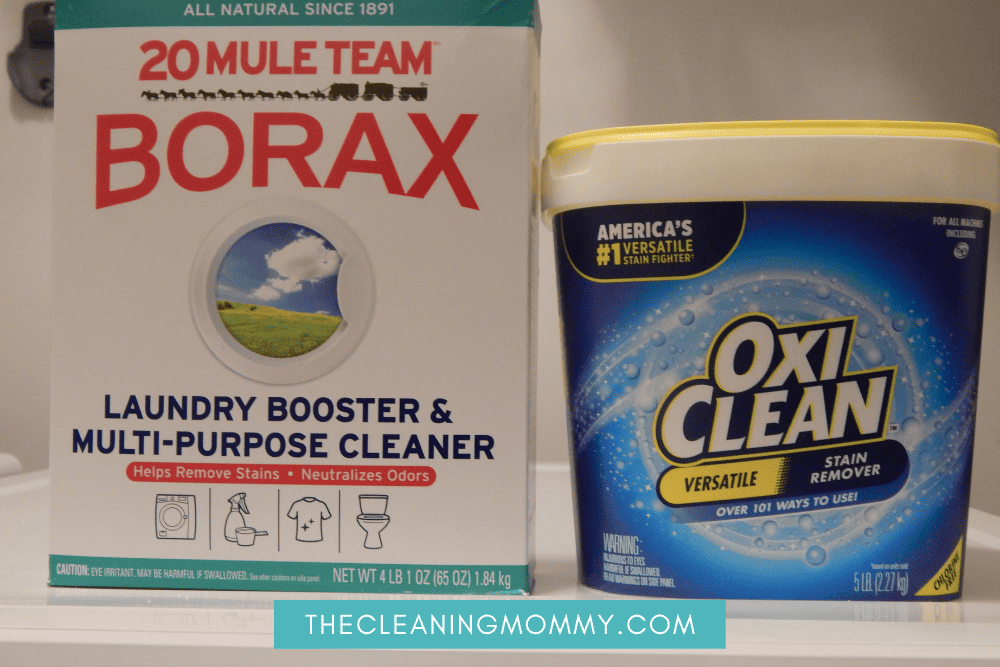
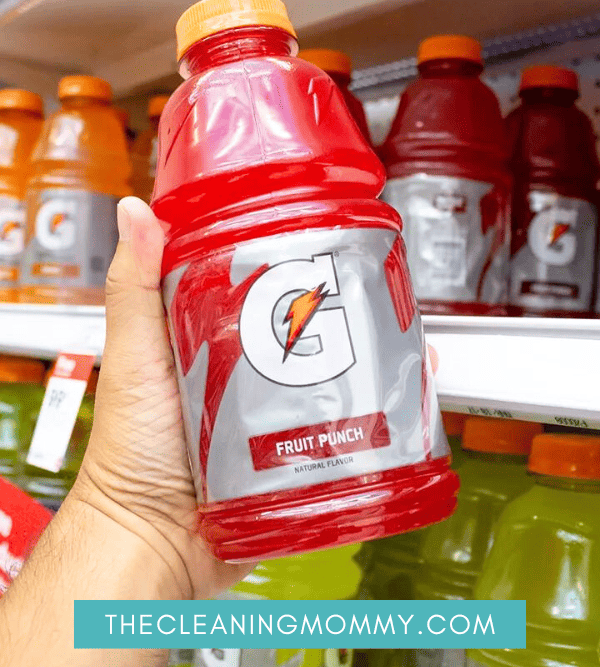
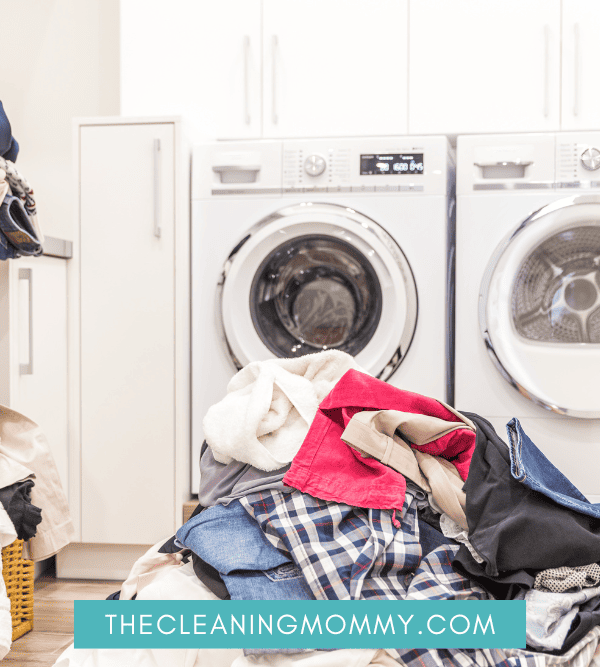
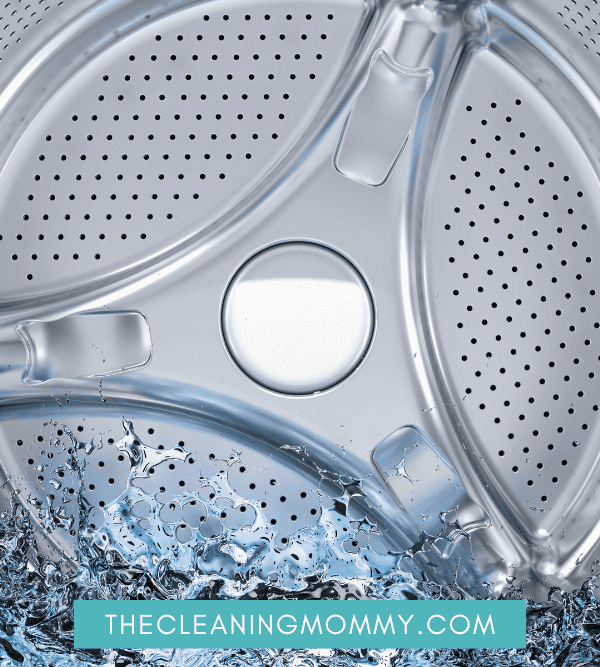

Leave a Reply